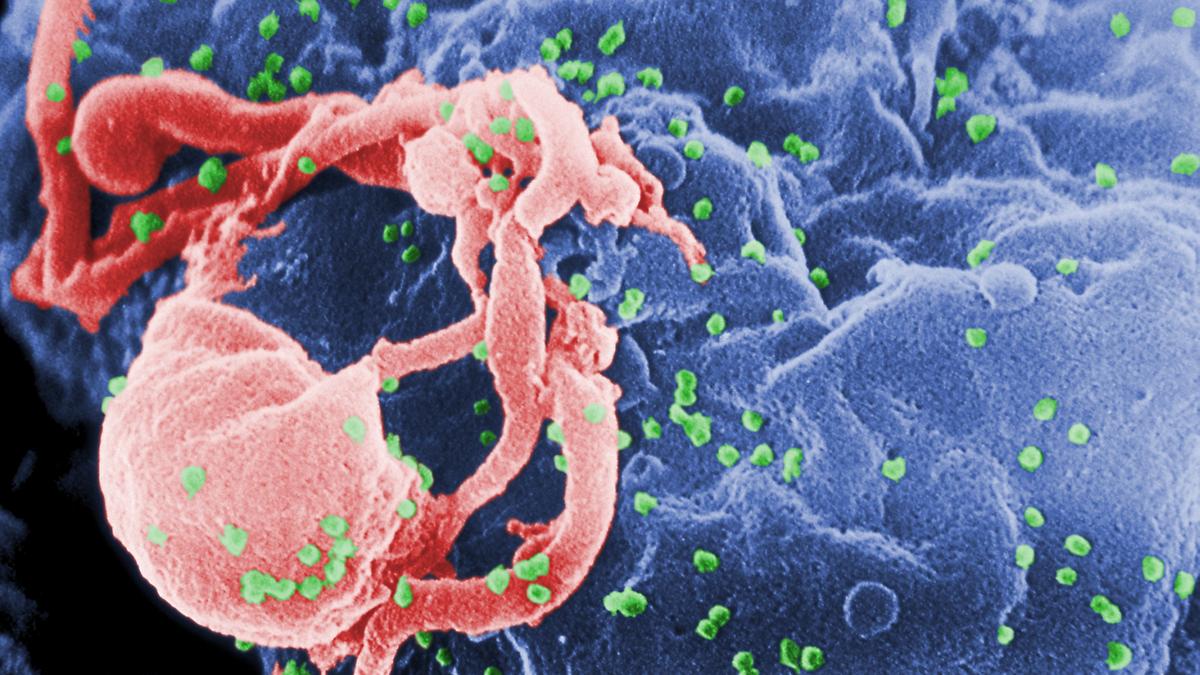
Four new studies report progress towards long-awaited HIV vaccine Premium
The Hindu
Researchers at the Scripps Research Institute and the Massachusetts Institute of Technology have outlined two promising nanoparticle-based vaccine candidates: N332-GT5 and eOD-GT8. They have shown that these novel vaccines could help the body make two classes of broadly neutralising antibodies to attack HIV.
In early 1981, Michael Gottlieb, an assistant professor at the University of California Los Angeles Medical Centre, wanted to teach some tenets of immunology to a post-doctoral fellow in his laboratory. Dr. Gottlieb asked the post-doc to select a patient from the hospital who displayed some immunological features that they might find interesting. The post-doc found a patient who had a relatively rare infection called pneumocystis pneumonia and had been admitted after sudden, unexplained weight loss.
During the course of their discussion, the hospital doctors referred four more patients with the same infection. Dr. Gottlieb published a paper detailing these five cases in a small American journal called Morbidity and Mortality Weekly. At the time, Dr. Gottlieb had no idea his paper was about to change the field of immunology forever.
That paper was the first report of acquired immunodeficiency syndrome (AIDS).
Today, nearly half a century after Dr. Gottleib’s landmark publication, AIDS still has no vaccine or cure. This anomaly in humanity’s otherwise remarkable track record in tackling major infectious diseases is a result of several factors. Chief among them is that the replication of the human immunodeficiency virus (HIV), which causes AIDS, is an incredibly error-prone process that results in multiple variants of the virus circulating.
The sheer number of all the different strains circulating in the world is in fact the biggest challenge to an HIV vaccine today.
To put it in perspective, HIV has more variants circulating in a single patient at any given point of time than influenza cumulatively generates in one year in all influenza patients around the world combined. And influenza is the second-best virus in terms of genetic variation.
When the immune system encounters a virus, one of its responses is to produce antibodies highly specific to proteins on the virions’ surface. Each antibody is unique to a small piece of a given protein, and the immune system can generate antibodies against any given fragment of any protein.

The Leela Palace Chennai presents the seven edition of Shefs at The Leela in collaboration with ‘Dean With Us’ — the mother-daughter duo of Rupali and Akansha Dean. The event honours the transformative role of Indian women chefs who are shaping the future of gastronomy. After past editions hosted across Bengaluru, Gurugram, Chennai, and Jaipur, the seventh edition in Chennai will bring together four women chefs — Sambhavi Joshi, Taiyaba Ali, Sehaj Ghuman and Bunuma Patagiri, who will bring their years of expertise into curating a menu that speaks both of their work and India’s diverse culinary heritage.





















 Run 3 Space | Play Space Running Game
Run 3 Space | Play Space Running Game Traffic Jam 3D | Online Racing Game
Traffic Jam 3D | Online Racing Game Duck Hunt | Play Old Classic Game
Duck Hunt | Play Old Classic Game










